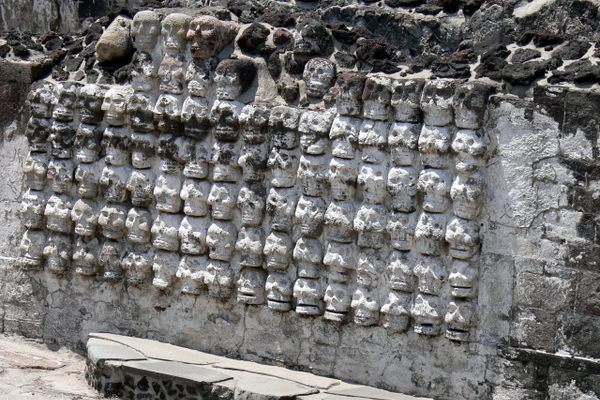About
On a windswept mesa overlooking the Hopi reservation in northeast Arizona are the ruins of the Awat'ovi settlement, the site of a violent clash of religion and culture.
In 1700, Hopi traditionalists massacred Christian converts and destroyed all remnants of Spanish influence in an effort to preserve their unique identity. During the 16th and 17th centuries, Spanish conquistadors, in their search for the legendary Seven Cities of Cibola, asserted control over the numerous Puebloan towns scattered throughout what are today Arizona and New Mexico.
Across European colonies, white settlers brought Christianity with them. They often used religion as a tool of oppression, and banned traditional spiritual practices. Attendant Franciscan and Jesuit priests succeeded in converting many Native Americans, although the Puebloans secretly blended their traditional spirituality with Christianity in their own ceremonies held in traditional kiva chambers.
Cultural tensions, famine, and brutal treatment of the native population eventually precipitated a coordinated rebellion in which the Spanish were overwhelmed by a surprise attack by every pueblo on the same day. Led by Popé from the San Juan Pueblo, the Pueblo Revolt of 1680 successfully eliminated European hegemony, but only briefly as the Spanish gradually reasserted control by 1692.
The native inhabitants of Awat'ovi, however, were divided on the question of welcoming back European (read: Christian) influence. Following an ultimatum issued by Hopi traditionalists in 1700, all men who cooperated with the Spanish or adopted Christianity were slaughtered, and the church was destroyed.
Ironically, the word “Hopi” generally means “people of peace,” and violence is anathema to their belief system. Traditionalists, therefore, had to call upon a special Katsina ogre spirit to descend on the village and carry out the ultimatum.
Following this devastating tragedy, Awat'ovi was permanently abandoned and the Spanish never returned to Hopi territory. As a direct result of the Awat'ovi revolt, the Hopi culture today is distinct from other pueblos for not including any European or Christian elements in their ceremonies, which continue to be performed much the same as they were hundreds, if not thousands, of years ago.
Awat'ovi was excavated in the early 20th century by archaeologists from Harvard’s Peabody Museum. Recovered kiva murals have been reproduced and adapted to decorate numerous places in northern Arizona including buildings at the Grand Canyon.
Related Tags
Know Before You Go
Visitors cannot access the ruins without a Hopi guide, and the friendly staff at the Hopi Cultural Center on Second Mesa will gladly provide information. Gary Tso of the Left-Handed Hunter Tour Company has been leading educational tours to the Awatovi site for many years. Visitors to Second Mesa should also look for Katsina doll carvings of the Awatovi ogre which are still made occasionally by carvers.
Also, visitors to the area should look for the prolific artwork of Fred Kabotie and his son Michael who both incorporated Awatovi symbolism into their creations.
These ruins are located south of Keams Canyon on the Hopi Indian Reservation.
Published
August 20, 2018
Sources
- http://www.slate.com/articles/arts/books/2016/04/awat_ovi_massacre_history_mesa_of_sorrows_by_james_brooks_reviewed.html
- https://www.nps.gov/nr/travel/american_latino_heritage/Awatovi_Ruins.html
- https://www.santafenewmexican.com/news/trail_dust/trail-dust-massacre-at-awatovi-is-little-known-act-of-genocide/article_7231e60b-9897-50bc-992d-8d5344685d4c.html
- https://www.hopi-nsn.gov/























